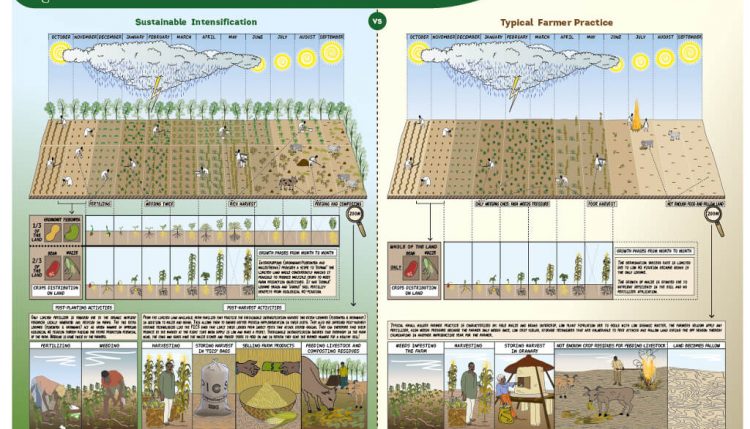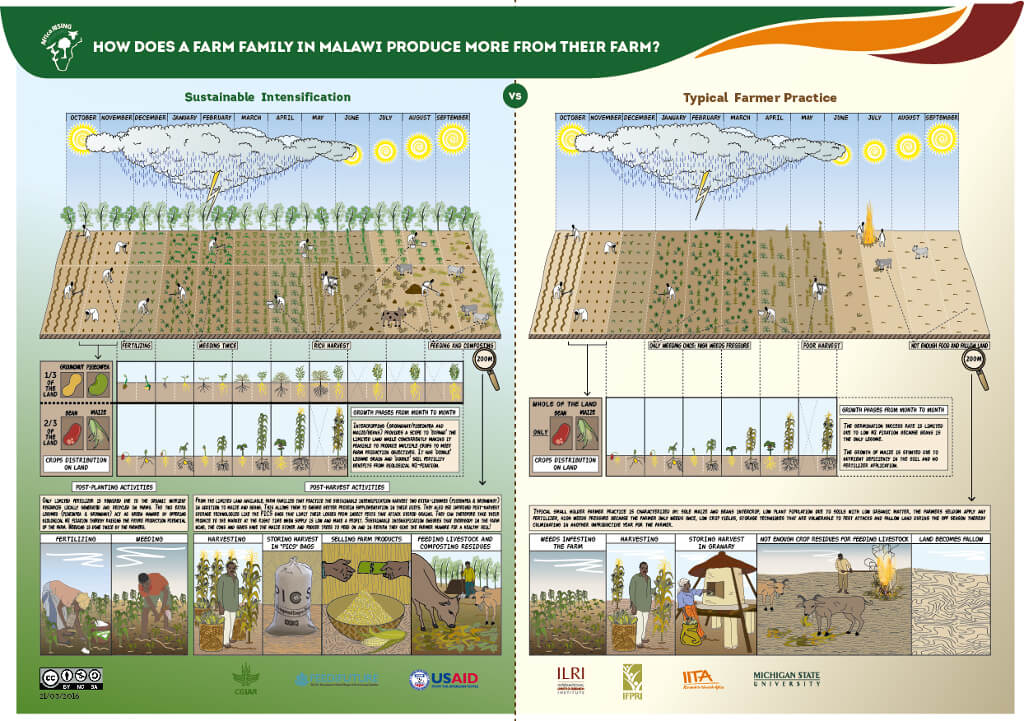
INFOGRAPHIC: how does a farm family in Malawi produce more from their farm?
A comparison of sustainable intensification vs typical farmer practice in central Malawi
The aim of Africa RISING is to provide pathways out of hunger and poverty for smallholder families through sustainably intensified farming systems that sufficiently improve food, nutrition, and income security. Sustainable intensification (SI) does not mean business-as-usual food production and marginal improvements in sustainability only. It rather implies a radical rethinking of food systems not only to reduce environmental impacts, but also to enhance animal welfare and human nutrition as well as support rural economies and sustainable development.
This newly published infographic which is largely based on Africa RISING program activities in central Malawi helps to visualize what SI means in the context of the farming system in the region and how it differs from the typical farmer practice. It also illustrates how the doubled-up legume technology works to ensure a farmer gets “double” legume grain yields and “double” soil fertility benefits from biological nitrogen fixation. The doubled-up legume technology is one of the main intercropping systems that have been researched and promoted under the Africa RISING program in Malawi and was officially released in February 2016 by the Malawi Agricultural Technology Clearing Committee for use by farmers in the whole country.
View and download the infographic here: http://www.slideshare.net/africa-rising/esa-infographic2

